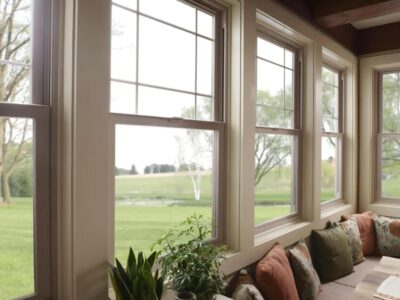When you paint a room, one of the first things you notice is the strong smell of paint fumes. For many, this odor is merely unpleasant, prompting them to open windows or turn on fans. However, beyond the bad smell, paint fumes can pose real health risks if proper precautions are not taken. Understanding what makes these fumes potentially dangerous, how to mitigate their effects, and the long-term implications of exposure can help ensure your home improvement projects remain safe for everyone.
1. What Causes Paint Fumes?
Paint fumes are produced by the release of chemicals known as volatile organic compounds (VOCs). These compounds evaporate into the air as the paint dries, creating the familiar smell associated with fresh paint. VOCs are used in both oil-based and some water-based paints to help bind the pigment to the surface, ensure smooth application, and enhance durability. Common VOCs found in paint include:
- Benzene
- Formaldehyde
- Toluene
- Xylene
When you inhale these VOCs, they enter your respiratory system and can potentially cause a variety of short-term and long-term health effects.
2. Short-Term Health Effects of Paint Fumes
For most people, the immediate concern with paint fumes is the short-term discomfort they can cause. Mild exposure to VOCs from paint may result in symptoms such as:
- Headaches
- Dizziness
- Nausea
- Irritated eyes, nose, and throat
These symptoms are usually temporary and subside once exposure to the fumes is minimized, such as when the paint has dried or the area is properly ventilated. However, in confined spaces or areas with poor ventilation, the concentration of VOCs can become higher, exacerbating these symptoms and potentially causing more serious reactions, including:
- Shortness of breath
- Chest pain
- Fatigue
- Difficulty concentrating
In people with pre-existing conditions like asthma, allergies, or other respiratory problems, exposure to paint fumes can trigger or worsen symptoms, making it more than just a mild inconvenience.
3. Long-Term Health Risks of Paint Fumes
While the short-term effects of paint fumes are unpleasant, the long-term health risks are more concerning, particularly with repeated exposure to high levels of VOCs. Prolonged exposure has been linked to more serious conditions, including:
- Lung damage
- Liver and kidney damage
- Central nervous system disorders
- Cancer
The International Agency for Research on Cancer (IARC) has classified some VOCs, such as formaldehyde and benzene, as known carcinogens. Long-term exposure to these chemicals can increase the risk of developing certain cancers, particularly in individuals who work in environments where they are frequently exposed to paint, like professional painters or factory workers.
4. Safer Alternatives: Low-VOC and No-VOC Paints
To address the health concerns associated with traditional paints, many manufacturers now produce low-VOC or no-VOC paints. These paints contain significantly lower levels of volatile organic compounds, making them safer for both indoor and outdoor use. While they still emit some fumes, they are much less likely to cause irritation or long-term health problems.
- Low-VOC paints typically contain 50 grams of VOCs or less per liter.
- No-VOC paints are usually defined as having 5 grams of VOCs or less per liter, making them the best option for indoor environments, especially where children, the elderly, or individuals with respiratory conditions are present.
By choosing low-VOC or no-VOC paints, you can minimize your exposure to harmful chemicals without sacrificing the quality of the finish.
5. How to Mitigate the Risks of Paint Fumes
Whether you’re using traditional paint or low-VOC alternatives, there are several ways to reduce your exposure to paint fumes and ensure a safer environment:
-
Ventilation:
Always ensure that the area where you’re painting is well-ventilated. Open windows and doors, use fans to circulate fresh air, and, if possible, paint during seasons when outdoor temperatures allow for constant airflow. Bay-Valley Painting offers several more tips to help.
-
Respiratory Protection:
If you’re using a paint with high VOC levels, wearing a mask or respirator designed for paint fumes can help reduce the amount of fumes you inhale. Standard dust masks aren’t sufficient—look for respirators that specifically filter out VOCs.
-
Limit Exposure:
- Try to avoid staying in freshly painted rooms for long periods until the paint has completely dried and the fumes have dissipated. This is especially important for vulnerable individuals, such as pregnant women, children, and those with respiratory conditions.
Time of Day:
If possible, paint during times of the day when the space can be ventilated for hours after you finish. Painting in the early morning or evening allows more time for ventilation to clear out fumes before nightfall.
-
Seal and Store Paint Properly:
Ensure that any leftover paint is tightly sealed and stored in a well-ventilated area to prevent continued off-gassing of VOCs.
Conclusion: Dangerous or Just Unpleasant?
Paint fumes are more than just an unpleasant aspect of home renovation—they can pose real health risks, particularly with long-term or high-level exposure. While most people will only experience mild, temporary symptoms when exposed to traditional paint fumes, the potential for more serious health effects exists, especially for those frequently exposed to VOCs or with underlying health conditions.
However, with the availability of low-VOC and no-VOC paints, along with proper ventilation and safety precautions, it is easier than ever to mitigate the risks associated with paint fumes. By understanding the potential dangers and taking steps to minimize exposure, you can ensure that your next painting project is not only aesthetically pleasing but also safe for everyone involved.











Comments